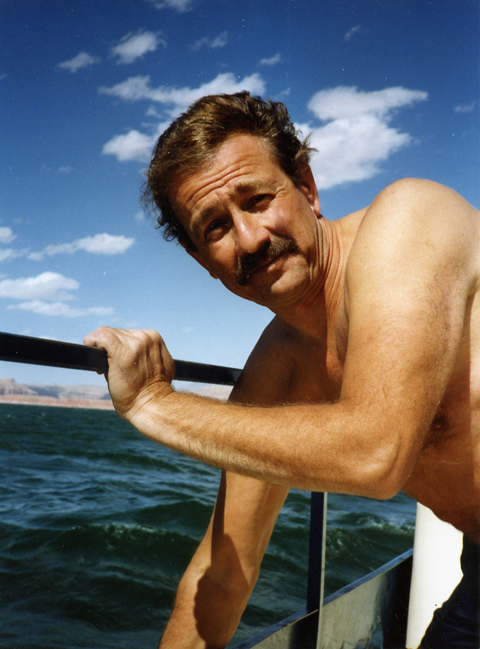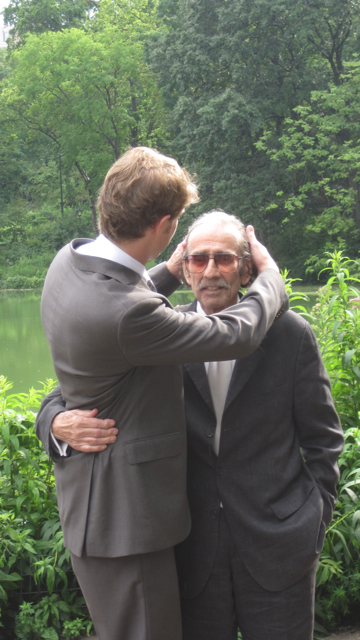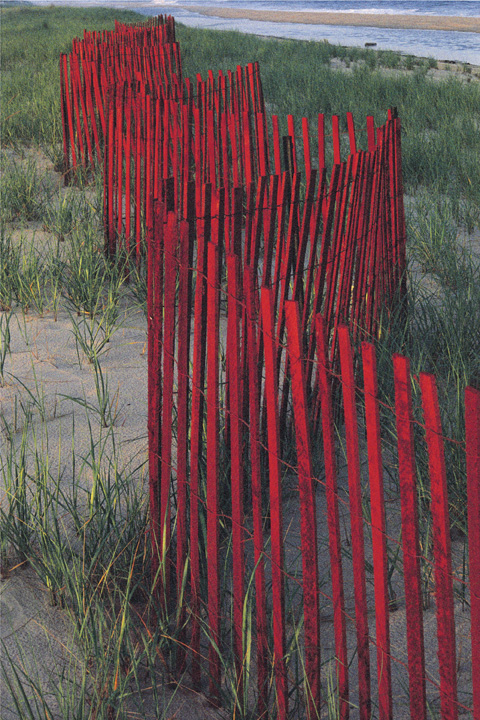August 16, 2012 |
Short Order
Steven Richter, photographer and beloved Road Food Warrior, dead at 74.

Steven on our houseboat at Lake Powell.
Steven Richter, the photographer and beloved Road Food Warrior of the Insatiable Critic, died Wednesday night in his sleep after a brief struggle against a confluence of illnesses. He was 74. Quiet, thoughtful, he was a tireless traveling companion, always game.
Richter was born in the Bronx and spent half his life in Aspen. His adored son Nico Ruderman, a sound engineer, came from Venice, California to be with him till the end. On June 25th Nico and his fiancé Anne were married in a Steel pavilion in Central Park with just six parents witnessing, so that Steven could be there.

Steven and Nico at the wedding.
At the table with a posse of type A narcissists and self-aggrandizers, Steven rarely spoke, but when he did, it was often deep and funny. In his last few weeks he was full of love, hugs and surprising wisdom.
“My heart hurts,” he said one day.
“Your heart,” I became alarmed.
“It says you must do good for everybody,” he said.
A street photographer with a unique sense of beauty and a modestly sardonic eye, he was honored with a retrospective by the Aspen Institute in 2004. He was the first photographer to visit and photograph the frail homebound elderly that Citymeals-on-Wheels helped feed. The resulting work, “Invisible Neighbors: Portrait of the Homebound,” won an Art Matters award from Eastman Kodak in 1994.
For the past two decades, we traveled abroad both on assignment and out of curiosity, spending months at a time in China, Cambodia, Vietnam, Tuscany, Peru, Tunisia, photographing the street life of cities, villages and rural corners of the world. In India and Venice he did some of his most astonishing work.
“What has become an obsession,” he wrote for an introduction to a proposed book called “Street Girls,” “is aimlessly wandering, totally immersed in the rush of experience, the endless theatre, the quirkiness of life on the street. That’s when I feel most alive.” The book, “Depictions of Women Around the World,” did not sell.

Steven Richter's Sunrise Over Angkor Wat
It was while developing his own work in a color lab on West 52nd Street in 2000, that Steven discovered the Iris Color Print process at the Laumont Gallery and began a collaboration with their technicians to print his work on watercolor paper. Of a show at the Laumont Gallery called Detours, Grace Gleuck wrote in the Times:
“The silhouetted outlines of Angkor Wat’s temples are seen in a splendid shot across a lush pond of lilies, their deep pinkness enlivening the dramatic darkness of the picture. Less cosmic but also striking is a red dune fence in East Hampton, whose sharp angled lines play against scrub grass and sand. Adding to the cosmopolitan mix are a surreal display of flattened fish heads on burlap in Hong Kong; bottles filled with snake wine in Saigon (whose still life character is challenged by the creepy, crawly things in the wine); and a snowy day in Venice where the city takes on the quality of a Japanese print.”

Steven Richter's Venice in the Snow
For a show of photographs of India “Through the eyes of others,” by the Indo-American Arts Council in April, 2009, Steven wrote. “Nothing quite prepared me for the astonishing images I would find in India, the intense religiosity of the people, the passion of its street merchants, the fascinating juxtaposition of old and new. My images are the product of perseverance, intuition, and sheer luck. And every once and a while I'm rewarded by finding something that I didn't know I was looking for.”
He had entered Cooper Union Art School at 16. Shortly after graduation he quit his first job, lured by the Western snow, to become a ski bum in Aspen, spending summers fighting fires in Alaska. Then as a graphic designer, he worked for a year at MOMA and two years teaching at the School for Visual Arts before Aspen beckoned again. There he found work as a carpenter, and contractor designing custom kitchens and remodeling old Victorian homes with a crew of friends. He loved the outdoors. Hitchiking and motorcycling, he saw the country before he went off to see the world. During frequent visits to New York, he began to photograph his wanderings in the city.

Steven Richter's East Hampton Fence
Eventually, he was hired by the Aspen Museum to install its exhibitions, and then as a graphics designer. Later, he served as Creative Director for three years. He came to New York to pursue photography full time in 1992.
His photographs from two decades of travel abroad appeared in Travel & Leisure, New York, Penthouse and other magazines, and in many design projects by the architect David Rockwell, including the giant blowups at Steven Hanson’s two Ruby Foos.
Steven never meant to be a food photographer — indeed he fought against the digital revolution until his beloved Kodachrome was no longer available — but he devoted himself to mastering that craft when we launched our website in 2007. As his illness eroded his focus, he tried to teach me how to edit. But even when I try to see with Steven’s eye, I am sure readers of Bite see the difference.
A celebration of Steven is being planned. Citymeals-on-Wheels will deliver 2300 meals in the Bronx this fall in Steven's honor. Learn more at Citymeals.org.